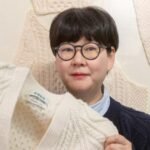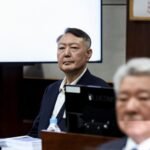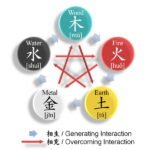
Samsung Electronics Co. has already sold out next year’s production of its next-generation HBM4 chips after beginning long-awaited HBM3E shipments to Nvidia Corp. in the third quarter, underscoring a strong comeback in the global memory market fueled by surging demand for artificial-intelligence servers.
The South Korean memory giant said Thursday that its HBM3E chips are “currently in mass production and being sold to all related customers,” confirming successful shipments of its fifth-generation high-bandwidth memory to Nvidia.
The Korea Economic Daily reported in September that Samsung had passed Nvidia’s qualification tests for its 12-layer HBM3E product, a milestone that had long eluded the company.
Samsung also said it has shipped samples of its next-generation HBM4 chips to key clients for quality testing and signaled strong demand for its upcoming sixth-generation lineup, noting that preorders for next year’s HBM supply already exceed its planned output.
“We’ve significantly expanded our HBM production for next year compared with this year, yet customer demand has already outpaced supply,” Kim Jae-june, executive vice president of Samsung’s memory business, said earlier during the company’s third-quarter earnings call. “We’re considering further capacity expansion as orders continue to increase.”

Samsung shares jumped 3.6% to close the day at 104,100 won ($72.90) in Seoul trading.
“Going forward in 2026, the Memory Business will focus on the mass production of HBM4 products with differentiated performance, while simultaneously aiming to scale out the HBM sales base,” Samsung said in a statement.
RECORD HIGH MEMORY SALES IN Q3
Helped by resurgent demand for its high-performance HBM chips, Samsung’s memory business reported record-high quarterly revenue of 26.7 trillion won in the three months ended September.
The strength came from brisk sales of HBM chips, double data rate 5 (DDR5) and graphics DDR7 (GDDR7) memory, as well as solid-state drives for servers.
Demand for high-value memory chips was driven largely by artificial intelligence servers amid the continuing AI investment cycle, the company said.

The performance lifted overall profit at the Device Solutions (DS) division, which oversees Samsung’s overall semiconductor business.
The unit posted 33.1 trillion won in revenue and 7.0 trillion won in operating profit, up 13% and 3%, respectively, from a year earlier.
Samsung cited improved memory prices on high demand and reduced one-time inventory adjustments as contributing factors.
NON-MEMORY STRENGTH AND EXPANDING FOUNDRY TIES
Outside of memory, its System LSI business maintained stable premium system-on-chip (SoC) orders, while the contract chip manufacturing arm recorded significant improvement in earnings on the back of record-high customer orders for advanced nodes.
In August, Apple Inc. confirmed that Samsung would produce its chips at the Korean chipmaker’s manufacturing facilities in the US as part of Apple’s new American Manufacturing Program, or AMP.
A month earlier, Tesla Inc. selected Samsung to produce its AI6 processor under a $16.5 billion contract.

Last week, The Korea Economic Daily exclusively reported that Samsung is also developing an AI modem chip designed for satellite communications, targeting SpaceX’s Starlink network as part of its next-generation non-terrestrial 6G ambitions.
Industry observers are also watching closely to see whether Samsung can secure foundry orders from its longtime ally Qualcomm Inc.
STRONG RESULTS ACROSS DIVISIONS
The Device eXperience (DX) division, which includes Samsung’s smartphone and consumer electronics units, reported revenue of 48.4 trillion won, up 8% year-over-year, and operating profit of 3.5 trillion won, up 0.1%.
Strong sales of its Galaxy Z Fold7 and Z Flip7 foldable smartphones, which were released this summer, and steady demand for its flagship Galaxy S25 series supported the results, the company said.
Its display business, Samsung Display Co., reported stronger results in the third quarter on robust demand for flagship smartphone panels and a rebound in large-display sales for gaming monitors.

Its automotive and audio subsidiary, Harman International Industries Inc., also saw solid growth, driven by continued strength in automotive electronics and connected-car systems, along with steady gains in its premium consumer audio business, including high-end sound systems and wireless devices.
Combined, Samsung’s DS and DX units drove its consolidated third-quarter revenue to 86.1 trillion won, which is its highest-ever quarterly sales, and operating profit to 12.2 trillion won, up 3% from a year ago.
BRIGHT OUTLOOK ON AI MOMENTUM
Samsung projected that the rapid expansion of artificial intelligence will continue to drive demand for its high-value memory and advanced logic chips.
The Korean chip giant said it will actively respond to demand from AI and conventional servers with HBM3E, high-density enterprise SSDs and advanced memory offerings, while expanding sales of server memory products such as 128GB DDR5 and 24Gb GDDR7 chips.

The company also plans to expand its capacity for 1c DRAM, used as a base die for HBM4, and increase sales of DDR5, LPDDR5x, and high-density QLC SSDs to meet the demand for AI applications.
Industry observers are closely watching whether Samsung and Nvidia will announce a new collaboration at a meeting in Seoul tonight between their chiefs – Samsung Executive Chairman Jay Y. Lee and Nvidia Chief Executive Jensen Huang, who is visiting Korea for the APEC CEO Summit, a sideline event of the APEC summit that opened earlier today in Gyeongju.
Its foundry business will ramp up production of 2-nanometer Gate-All-Around chips and prepare to begin operations at its new fab in Taylor, Texas, next year.
On the mobile front, Samsung said it will build on the success of its foldables by expanding AI-enabled smartphones through seasonal promotions and partnerships with global tech companies.
“The rapid growth of the AI industry is expected to open up new market opportunities for both our semiconductor and device businesses,” Samsung said.















